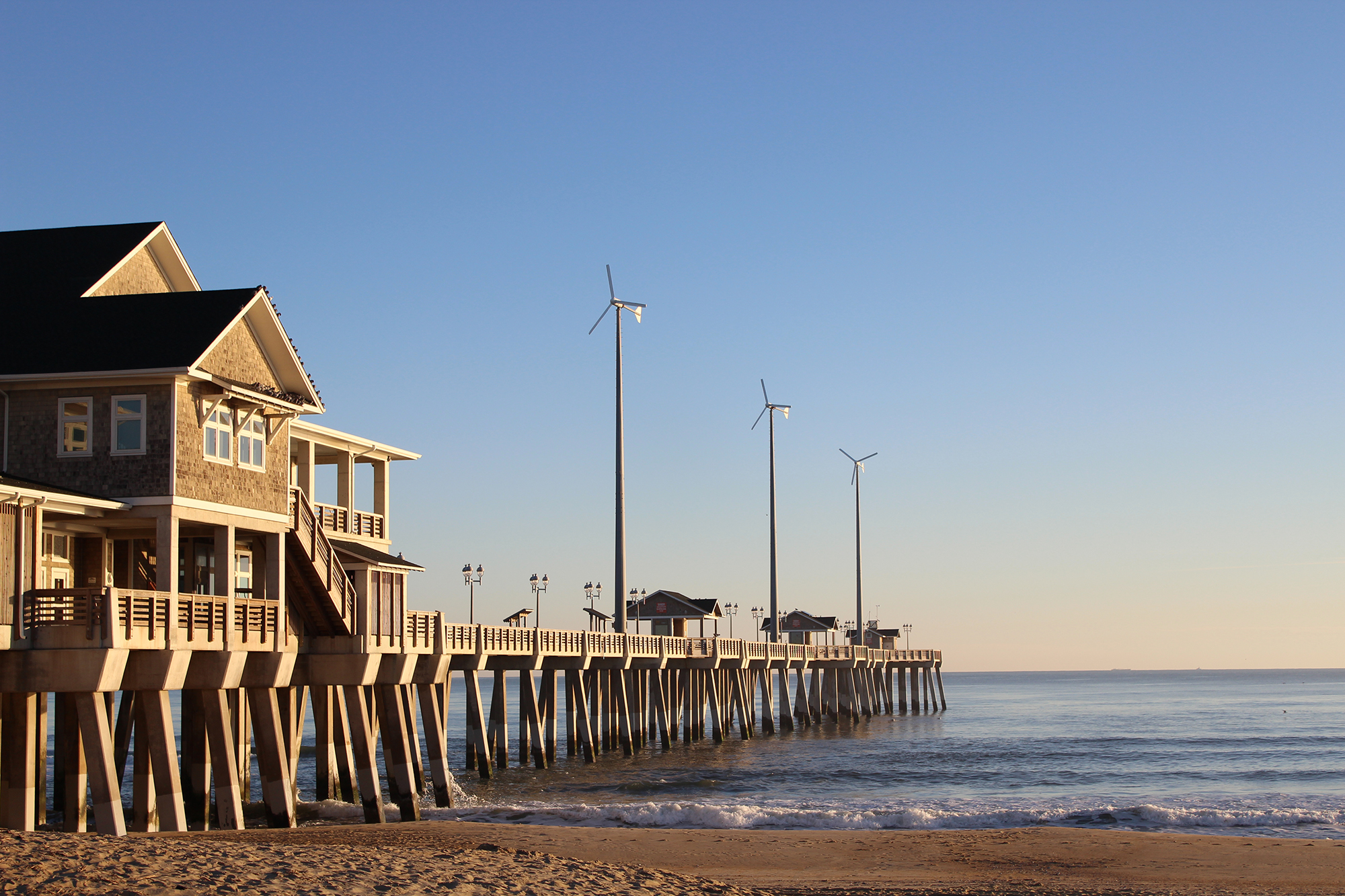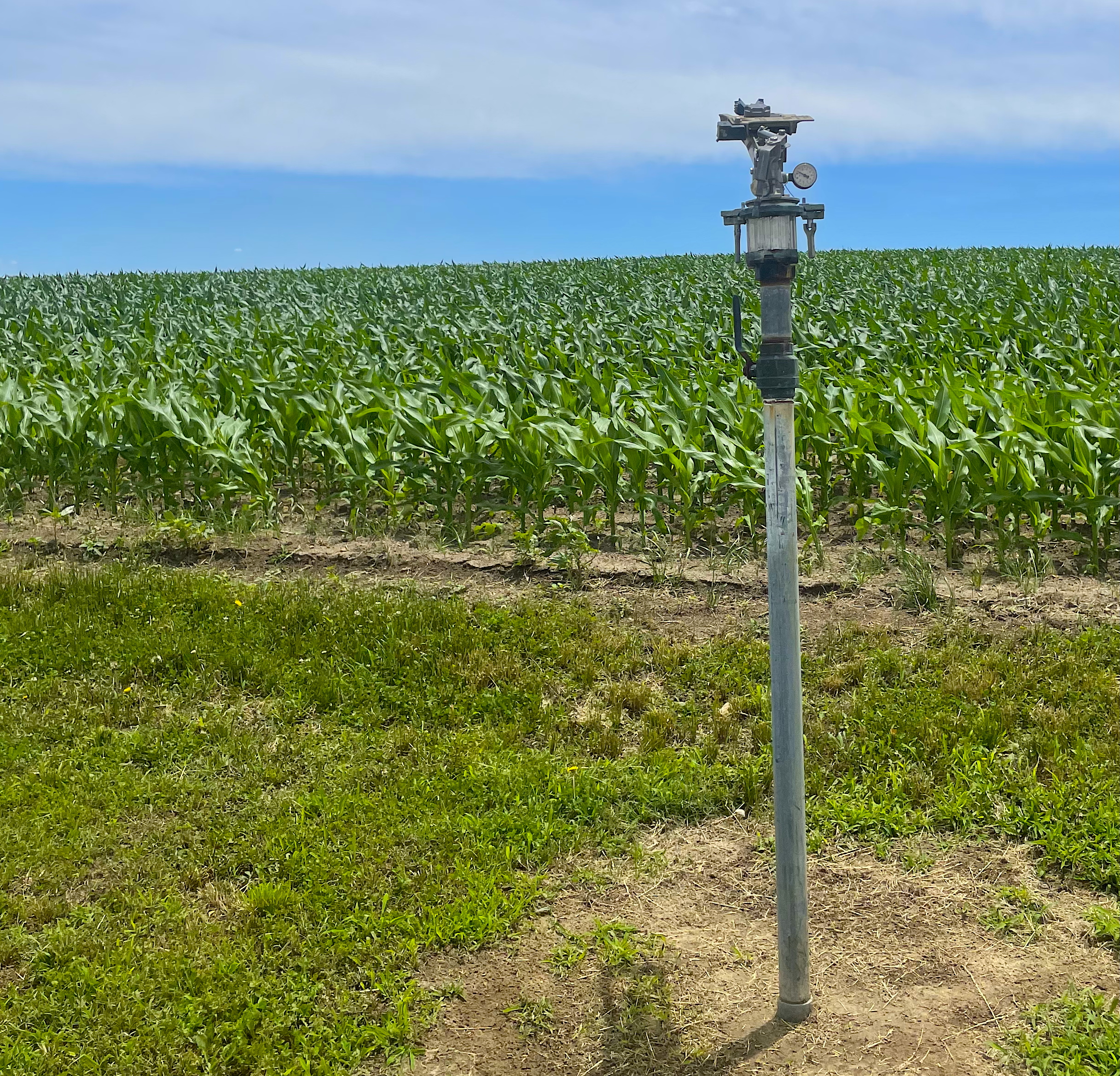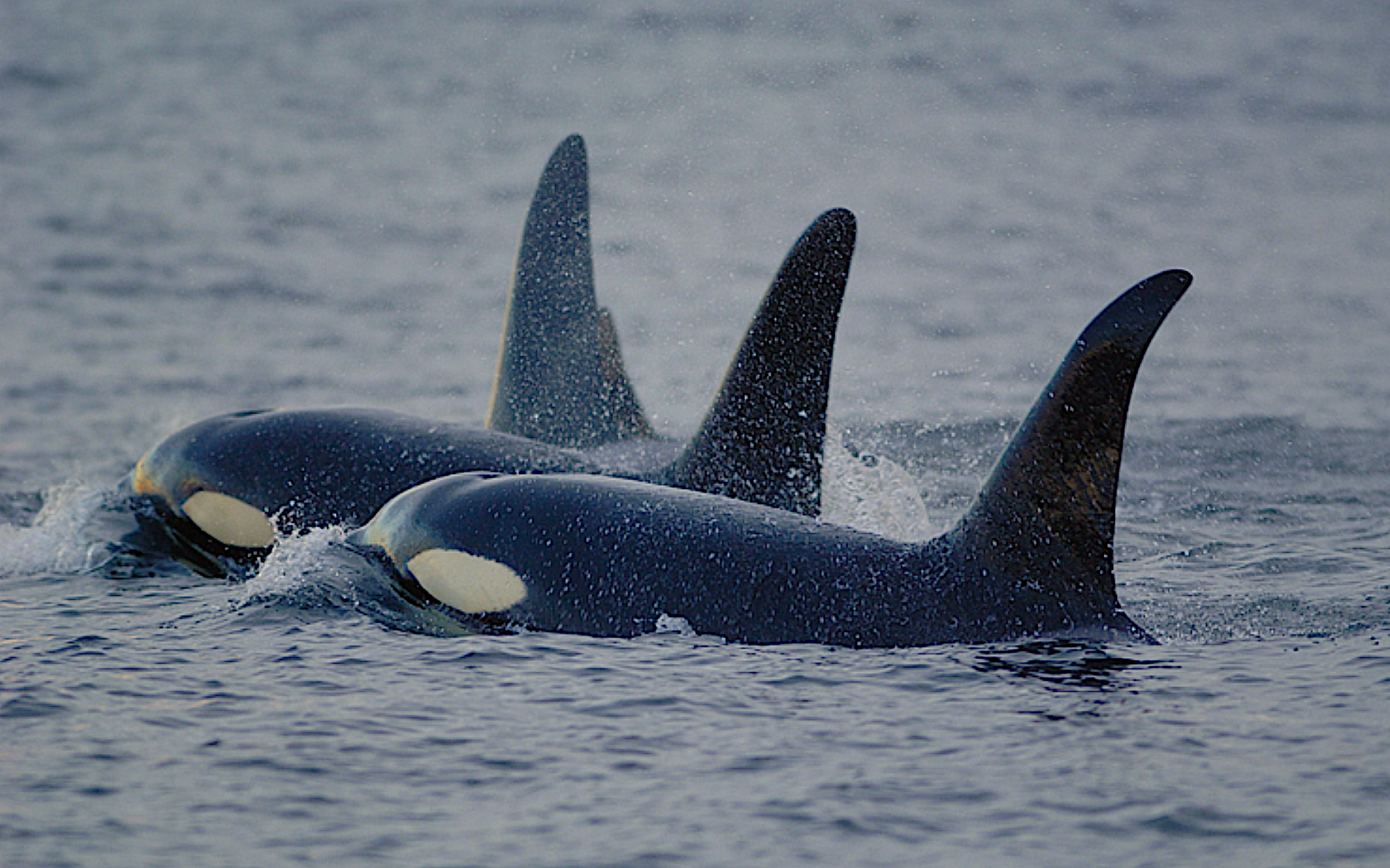Isabel Makes History in North Carolina

“There’s a price to pay for living in Paradise,” Jimmy Morris says philosophically.
Morris and his wife, Robin, paid dearly when Hurricane Isabel surged over the Core Banks barrier island, pushing Core Sound waters through their Sea Level home and clam hatchery business — its crop of 8 million seed clams just weeks away from harvesting.
“When the storm tide surged, the beach went under and the surf came in,” says Willis.
In the wake of the storm, some 90 percent of the homes and businesses in the small Carteret County community were destroyed or damaged.
“It’s hard,” says Robin Morris. “But people here have been helpful and generous.”
The couple recently paid off their home mortgage, but had not renewed their flood insurance policy, which was tied to monthly mortgage and escrow payments.
So, after nearly 30 years, they are starting over from scratch. Natives of nearby Atlantic,
they moved to Sea Level soon after they married, bought a home and made a life. Until about 10 years ago, Morris fished for a living.
“With two sons, I wanted to do something that meant being off the boat and at home with my family more,” he recalls.
That something was building a clam hatchery business — one of only a few producing seed clams for growers.
After 10 years, the business was beginning to pay off. But Isabel sent him back to square one. Gone is the clam nursery building and all the “stuff” that keeps the operation going — electrical and plumbing systems, meters, raceways and tanks.
Gone also is the crop of seed clams that would have sold for about $160,000. “A year’s worth of work was gone in a flash,” Morris says.
Little or No Disaster Aid
Though aquaculture is covered under a new provision of a disaster-assistance program for agricultural products, Morris doesn’t expect to be compensated for his loss. The formula, he says, is complicated, and adjusters are not familiar with aquaculture “crop” values.
Still, he says, he’ll find a way to start over. At least Isabel had spared the clams he had planted in his leased bottom a year earlier.
Farther north, Dell Newman is experiencinga similar dilemma in Swan Quarter on the Pamlico Sound.
Their shedding operation is pretty much a wash. “The building may be repairable, but the inside operation is gone. What Isabel did not wash away is ruined. I have no idea what amount of money it will take to get back in business,” Newman says.
To make matters worse, he adds, “I thought I was insured, but the wind insurance folks are arguing with the flood insurance folks.”
There is no federal grant money available to help rebuild — just small business loans. “Most folks here don’t see that as an alternative since they are still in hock from Hurricane Floyd small business loans,” he explains.
Still, Newman considers himself lucky. His home was spared. “It’s a different story for my folks. They had more than two feet of standing water — the first time that happened in the 36 years they lived in that house.”
Some folks have cleaned out the muck as best they could and continue to live in their homes, because they have nowhere else to go, Newman says. Others, including some elderly Swan Quarter residents, have moved inland to live with relatives or in nursing homes.
Moving away is not an option. Like his father, Tommy Newman, he has fished all his life. Once a waterman, always a waterman, he says.
Margie Brooks, director of the Hyde County Chamber of Commerce, also has no intention of leaving in spite of the fact that her home, business and two vehicles were inundated.
Brooks was standing on her front porch when the eye passed. “I looked down the street and a six-foot wall of water was crashing along Main Street and all the way to U.S. 264. It ran through the old O.A. Peay School that we all thought was on high ground,” she recalls. “There was no high ground that day.”
In all, more than 400 homes and businesses were damaged or destroyed in Hyde County, she says. “While Ocracoke Island was spared, their economy is tied to tourist trade. And the island was pretty much closed for more than a month.”
Assistance is limited. Hyde County’s share of the North Carolina’s Hurricane Fund is $33,000 — just enough to underwrite the needs of about 64 households, Brooks says.
“But good things are happening,” she adds.
The United Methodist Disaster Response Program is operating in Swan Quarter. “We are here for the long term,” says site coordinator Tommy Gilbert. “There’s much more need here than folks across the state know about.”
Gilbert is coordinating all volunteer activities, including plans for a rebuilding program utilizing volunteer labor and donated materials.
“We’re here to fill in the gaps for those without insurance or other assistance,” he says. He expects the outreach program to remain for another 18 months.
“It’ll be a slow recovery. For Swan Quarter, Isabel was a lot worse than Hurricane Floyd,” says Brooks. “We just never expected what we got.
A View from the Sea
Ironically, just two months before Isabel unleashed her wrath, an array of instrumented buoys was deployed along the coasts of North and South Carolina. The pilot project known as the Carolinas Coastal Ocean Observing and Prediction System (Caro-COOPS) is funded by the National Oceanic and Atmospheric Administration.
Caro-COOPS could become part of an integrated national storm prediction system that enables emergency management officials to make crucial evacuation decisions, says Len Pietrafesa, project coinvestigator from North Carolina State University.
When Isabel began to churn in the Atlantic and threatened the Carolinas as a massive Category 5 hurricane, the team of scientists from NC State, the University of North Carolina at Wilmington and the University of South Carolina were ready to put the
system to the test.
Every two hours, data streams from the buoys’ submerged instruments bounce off a satellite and beam into laboratory computers — water temperature, salinity, wave activity and water height. In addition, an acoustic Doppler current profiler is used to detect shifts in the current’s direction and speed, critical to hurricane prediction and storm surge modeling.
Knowing what is going on near the ocean floor helps scientists understand how powerful the storm surge will be, Pietrafesa says.
For nearly a week before landfall, the team worked to collect and analyze the near-real time data. As the storm advanced, they developed “what-if” landfall scenarios — Myrtle Beach, Wilmington and Bogue Sound — for the National Weather Service.
With the hurricane still more than 72 hours from landfall, the team narrowed the target to the Cape Lookout area, Pietrafesa says.
To determine where and when the surge would hit, the scientists used the computing power of two different systems. One computer model even showed the potential for flooding along the Pamlico and Albemarle sounds as well as the Chesapeake Bay.
Isabel did exactly what their computer models predicted, Pietrafesa says.
In spite of the warnings of ocean and sound-side surge, many residents did not evacuate. Pietrafesa thinks that many let their guards down when Isabel was reclassified as a Category 2 as she approached land.
But with 105 miles per hour winds and a storm surge of 12 feet, a Category 2 storm packs a powerful punch. Swirling winds push ocean water toward the shore. The advancing surge combines with the normal tides to create the hurricane storm tide, which increases the mean water level. In addition, wind waves are superimposed on the storm tide — a condition that produced 25-foot waves along parts of the Outer Banks.
Isabel made landfall just after high tide. When the storm tide coincides with the normal high tides, the rise in water level can cause severe flooding in low-lying coastal areas.
Though hurricane season officially ended Dec.1, university and weather service researchers continue to analyze ocean data from Hurricane Isabel, factor in atmospheric influences, and attempt to understand the anatomy of a hurricane.
Hurricanes are a fact of life for North Carolina, Pietrafesa says. They draw energy from warm tropical ocean waters to power intense winds and ocean surges, he explains. And, more often than not, the warm Gulf Stream delivers the storm and all its destructive force to North Carolina’s doorstep.
Some day, Pietrafesa says, prediction will be so precise that emergency managers will be able to narrow evacuation to city-block scale.
Measuring the Damage
Meanwhile, other researchers are measuring the damage wrought by Hurricane Isabel as she cut a path through North Carolina, Virginia, Maryland and Pennsylvania. Before she finally blew herself out, she had claimed 54 lives and chalked up $2 billion in property damage.
According to Spencer Rogers, North Carolina Sea Grant coastal erosion specialist, Hurricane Isabel will be the most documented hurricane ever.
“The state took the initiative and requested the Federal Emergency Management Agency to put together a Hurricane Isabel Rapid Response task force,” he explains. “In the past, we did a good job in documenting individual case studies. But this was a chance to broaden post-storm evaluation to a community scale, looking at water, wave, erosion and wind.”
Before the high-water marks dried, the team of scientists and coastal engineers spread out along the Outer Banks and sites on the Pamlico Sound to conduct a post-storm survey of damage to coastal buildings. Rogers was asked to help plan and implement the survey since he is familiar with the evolution of building codes over the past three decades.
North Carolina has the second oldest hurricane-resistant building code in the country, he explains. Since being implemented in the mid-1960s, it was reinforced by the N.C. Floodplain Management Program and Coastal Area Management Act.
“The survey was an opportunity to test the performance of existing building codes, and check to see if and under what conditions they are or aren’t working,” he says.
“In this storm, we clearly took a significant step backwards,” Rogers says.
To his surprise, newer buildings experienced more damage than older ones. Since the late 1960s, typical beach homes have been built on deep piling foundations, with the lowest floor elevated. The open space accommodates parking and allows water to wash through during storm events.
More recently, there has been a shift to low-elevation building, with enclosed, under-the-house living space. Consequently, Spencer observed new oceanfront homes with bottom-story rooms pounded apart by 25-foot waves and storm surge.
Other data collected will be useful for resource managers and policy makers, Rogers says. For example, measuring soundside and oceanside high-water marks will be useful as the state revises flood plain maps.
In addition, the new technical ability to predict hurricane progress five days out opened
a window of opportunity for the U.S. Geological Survey to measure ground elevations of dunes before and after Isabel.
“The amount of detailed information collected is unprecedented,” Rogers says.
Gone Fishing
As hurricanes go, Isabel was unusually dry, dropping a mere 8 inches of rain at peak points along her path. Hurricane Floyd in 1999 deluged the coastal plain with 19 inches of relentless rain, freshening sounds and tidal creeks in the Pamlico- Albemarle Estuarine System, where water quality and habitat conditions were adversely affected for several months.
Isabel’s winds barely had subsided when Sea Grant researchers were heading out to measure her impact on the water quality of the state’s important fisheries nurseries.
Preliminary reports by Hans Paerl, of the University of North Carolina at Chapel Hill, are
surprising. Paerl’s post-Isabel studies show that the wet spring and summer months that preceded Hurricane Isabel delivered greater amounts of freshwater and nutrients to the systems than the hurricane did.
While Isabel may not have contributed acute water quality or habitat altering impacts, he underscores that she is one in a sequence of hurricanes that has struck with a “remarkable increase in frequency since 1996.”
Increased tropical storms, nor’easters and hurricanes could have a cumulative environmental impact, he says, leaving estuaries and sounds in a state of disequilibrium.
Indications are that various levels of the food chain may take multiple years to recover from large and frequent disturbances.
Paerl stresses the need for long-term monitoring and assessment to detect trends, changes and the full range of natural and human impacts on the ecosystems.
FerryMon is one example of an innovative approach to monitoring water quality that Paerl and Duke University colleagues Joseph Ramus and Larry Crowder devised in response to Hurricane Floyd.
Since then, in cooperation with the N.C. Department of Transportation’s Ferry Division,three ferries that traverse the Pamlico Sound and Neuse River are equipped with automated flowthrough systems that sample near-surface water on a daily basis.
Crowder and his students were out on the Pamlico Sound looking for signs of troubled waters the day after Isabel passed. They constructed top-to-bottom water column profiles to detect fresh and saltwater stratification and signs of nutrient loading.
A second cruise 10 days later at a different sound location confirmed the good news: Freshwater input from Isabel was not an issue. There was no evidence of stratification or low oxygen levels that existed after Hurricane Floyd.
“The take-home message is that each hurricane differs in pathway, wind effect, and freshwater input,” Crowder says. “There can be no generalization.”
Memories Linger
That may be so, but many North Carolinians who have weathered decades of hurricanes can’t help pointing out similarities.
Nacie Peele, an 84-year-old resident of Hatteras Village, places Isabel in the same class as the 1933 hurricane. It, too, arrived on high tide and brought walls of water to the small fishing village.
“I was 13 at the time,” he recalls. “Water came in the house, along with mud and other stuff. It was a real mess. A neighbor sat the storm out with us.” He says the worst storm came in 1936. “It cut an inlet through the island,” Peele adds matter-of-factly.
So, when Isabel carved a new inlet through the narrow stretch of the barrier island, cutting off Hatteras Village from the island, Peele was not surprised. Nor did he consider himself stranded until the inlet was filled and road rebuilt. “I was home, safe and dry. I’m a packrat, so I had plenty of food to wait it out.”
The fifth-generation waterman is philosophical about life on the Outer Banks. “Seems we’re always fighting nature in one way or the other,” he says, recalling a string of hurricanes and nor’easters he has survived through the years.
Of course, he adds, the population on the Outer Banks in the old days was sparse. There were few homes and businesses to be washed away or buried with sand, as was the case with Isabel.
“They began to build on the beach in the 1950s. Durant Station Motel was the first one on the ocean beach. More were built after that. They all went down in Isabel. The whole works,” he says.”I told my nephew that one day everyone may have to move off Hatteras Island.”
But until then, he is resolved to ride out whatever storms come his way. “There is no place in the world like the Outer Banks,” he says.
This article was published in the Winter 2004 issue of Coastwatch.
For contact information and reprint requests, visit ncseagrant.ncsu.edu/coastwatch/contact/.
- Categories:


